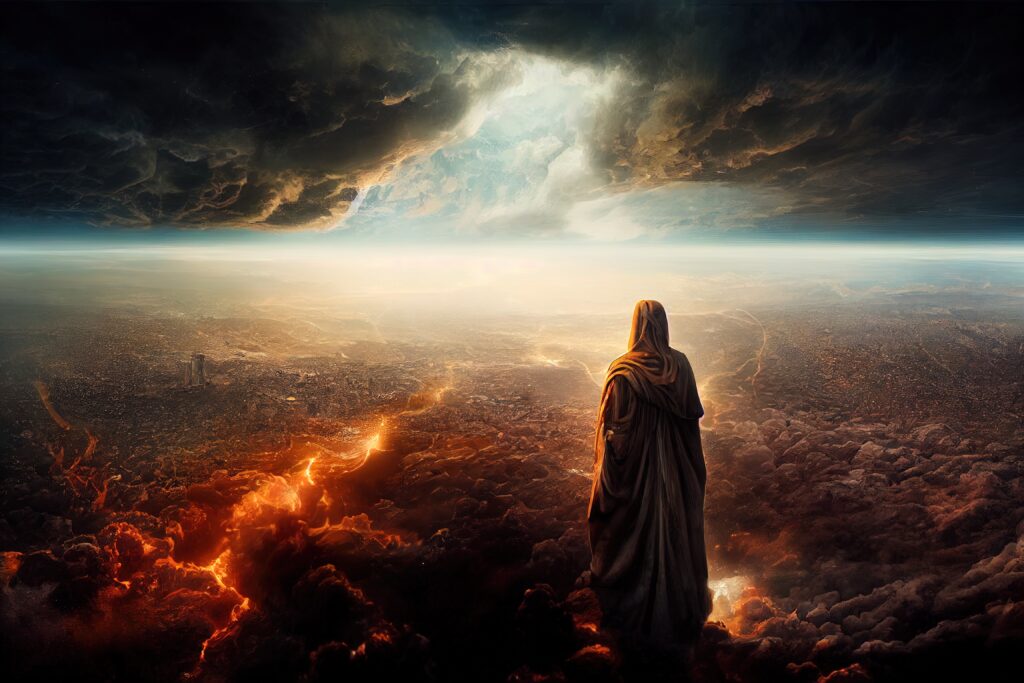
Overwhelmed with Joy
And he (the angel) said to me, “Write: BLESSED ARE THOSE WHO HAVE BEEN CALLED TO THE WEDDING BANQUET OF THE LAMB.” And he said to me, “These are the genuine words of God.” – Rev 19:9 cont.
When lambs were brought to the temple to be sacrificed, they were required to be absolutely spotless and without blemish. This was to illustrate the perfect sinless purity of Jesus Christ. Those who are called to the wedding banquet of the Lamb will seek the cleansing that comes from intimate relationship with the spotless Lamb of God. They are covered with His perfect righteousness. Right from the beginning, at the entry of sin into our earth via our first parents, the sacrifice of a lamb (the innocent dying for the guilty) was a symbol of Jesus. Note in Genesis 3:21 that Adam and Eve were clothed in the skin of the lamb that was sacrificed for them. Like the parable of the wedding garment (Matt 22) we are supplied with the only acceptable covering to attend the wedding – the garment of His Righteousness. We can rejoice with Isaiah who declared “I am overwhelmed with joy in the Lord my God! For he has dressed me with the clothing of salvation and draped me in a robe of righteousness. I am like a bridegroom dressed for his wedding or a bride with her jewels.” – Isiah 61:10, Rev 21:2 NLT
This passage follows the sequence of a Jewish wedding as pointed out two days ago. Christ left His father’s house in heaven to come down to the earth and betroth His bride – the church – for Himself. The dowry was paid at Calvary. When understanding the conceptual language of the Father’s house, we should remember that the biblical evidence that Christ existed with the Father since the beginning is clear. In his prayer the night before His crucifixion He prayed, “I brought glory to you here on earth by completing the work you gave me to do. Now, Father, bring me into the glory we shared before the world began.” (John 17:4-5) Paul declared, “He is the image of the invisible God” – Colossians 1:15-15.
After Jesus finished His work and 50 days following His resurrection, He went back to His Father leaving the following promise with His disciples,” “Don’t let your hearts be troubled. Trust in God, and trust also in me. There is more than enough room in my Father’s home. If this were not so, would I have told you that I am going to prepare a place for you? When everything is ready, I will come and get you, so that you will always be with me where I am.” – John 14:1-3 NLT. Without a doubt He will return to take us home.
As we noted already in Rev 19:7-8 His ‘wife’, the church is clothing herself with the wedding garment of fine linen and making herself ready. We also noted, but repeat for emphasis and importance, that the rob was ‘granted’ (v8). These white robes are not self-made, or self-earned, they are supplied by Christ and given to the redeemed. There is not one stitch of human devising in this garment with which you are covered. In Matt 22 we were told that only those who have the wedding garment will be allowed into the wedding supper. This gift is the perfect righteousness of Christ.
The invitation is given to all: “Whosoever desires, let him take the water of life freely” Revelation 22:17. Whosoever is an all-inclusive pronoun that excludes no one! There is no exclusion zone around the cross. The church is the bride, all the saved are guests, and each individual has been given an invitation to be a guest at the wedding supper. Our text today says that “this is a true saying.”
In the parable and the real story, the Bridegroom returns to receive His bride. That’s us!

Ross that gift for us is astounding. This is a minor point: You said that “Adam and Eve were clothed in the skin of the lamb that was sacrificed for them.” Where did you find that idea?
Thanks for your question Leon. The text in Genesis 3:21 simply says God made “garments of skin” for them, implying the sacrifice of an animal. While the sacrificial system in the Old Testament often involved lambs, and this act foreshadows the ultimate sacrifice of Christ (the Lamb of God), the specific animal is not identified in Genesis 3.
This verse describes God providing clothing for Adam and Eve after they ate the forbidden fruit and realized their nakedness. The act of God making garments of skin signifies the first instance of animal sacrifice in the Bible. However, this event is interpreted as a foreshadowing of the sacrifice of Jesus Christ, who is referred to as the “Lamb of God” in the New Testament. The offering /sacrifice of a Lamb became a symbol of what Christ was going to do in all of Genesis. This therefore is the implication for Genesis 3:21.
The fig leaves that Adam and Eve initially used to cover themselves highlight the inadequacy of human efforts to deal with sin, contrasting with God’s provision of a covering. Thus, the conclusion, based on the rest of scripture, including the New Testament, is that the animal sacrificed for their cover was a lamb. “Behold the Lamb of God that takes away the sin of the world,” John the Baptist declared.